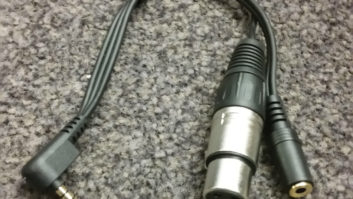
Radio has become more competitive. Several of our broadcasters produce shows from their homes or offices. Up until recently, we have used traditional codec solutions. We have a rack full of different manufacturers’ codecs to provide flexibility, but sometimes the cost to buy and set up broadcasting equipment is too high for some small- to medium-sized businesses to commit to, for a once-a-week broadcast.
So why not use the power of the computer and virtualization? The key to delighting customers is to provide cost-effective quality solutions. One such offering is Cleanfeed.
NEW APPROACH
I was looking for a low-latency, great-sounding solution that was simple to use. I came across a Linux program called trx and Cleanfeed, a much-talked about web-based solution that makes scheduling a remote broadcast easy.
Cleanfeed provides a high-quality remote solution that is cost-effective. If fact, they offer a free version that provides all the functionality needed for a basic remote broadcast.
Mark Hill is the developer of trx and Cleanfeed. At the spring NAB Show, I had an opportunity to talk to him about the software.
He had wanted to find a way to make it easy to broadcast radio shows on the local college station. He imagined broadcasting from the living room or kitchen of an apartment. The cost of traditional hardware-based solutions made that difficult. This was the inspiration for Cleanfeed.
Cleanfeed is simple to use, is cross-platform and sounds great. It uses the open-source Opus codec and keeps up with any of our other hardware-based equipment.
At WRDT we had some experience using software-based applications to connect to our codecs. What I didn’t like is that they require the user to install an application on their computer, tablet or other mobile device.
[CleanFeed.net: Live Remotes on a Budget]
What I like about Cleanfeed is that the remote user does not have to install anything, all they need to do is click on a connect button provided in an email that is sent to them.
The connection starts at the studio, which has a log-in to Cleanfeed. An account can be created at https://cleanfeed.net.
Once logged on, the studio puts together a connection request which includes the name and email address of the remote user. Cleanfeed also allows multiple connections.
We had a new broadcaster interested in producing a show from their office. I spoke with the doctors from the firm and they were willing to try the new solution out.
THE OFFICE
Dr. Morgan Crawley from Upper Cervical Spine Centers of Michigan worked with me to set things up. We began by seeing how well an off-the-shelf USB microphone would perform through a Cleanfeed connection. A Blue Snowball iCE microphone was chosen for the first test.

The setup was easy. The microphone was detected automatically through a Windows 10 computer. In a few minutes we were up and running.
Dr. Crawley wanted to take calls during her show and we were able to test mix-minus and talkback. All worked very well.
For our next test we added another doctor. To make it interesting, we used her iPhone. Both doctors were able to hear each other and could hear the caller and producer in the studio. We have been airing their show for several months without issue. This configuration is so easy to use, and flexible.
We decided to expand our use of Cleanfeed for other broadcasters. The “Pro” version provides more functionality to select additional inputs, to limit connections to a specific time limit, and offers multitrack recording.
We also experimented with various configuration such as using multiple USB microphones through VB Audio’s virtual soft mixer.
The software-based mixer worked well other than the amount of latency it adds to the local monitoring. The nice feature of using this mixer is the ability to mix in other applications such as Skype locally.
[Cleanfeed Adds Podcast Features to Broadcast Service]
Since the mixer has multiple busses, you can set up a local mix-minus and even play and record audio through its easy-to-use recorder. I like the added touch of using a cassette as the image for the recorder. The mixer also offers gating, compression and equalization on each input.
We will be adding a daily talk show that will be produced offsite and requires a two-microphone setup. In tests the latency for local monitoring on the software mixer was too much for our talent to do an hour-long show.
So we turned to a PreSonus AudioBox USB 96 interface for the show. It has zero latency on local monitoring along with a local monitor mix control that makes setting the blend between local and remote audio easy.
We look forward to the broadcasts we will be able to air, and the happy clients being able to accomplish their goal of producing a high-quality broadcast for an affordable price.
The author is Director of engineering for Z883 in Orlando.
FROM THE FIELD
From the Field articles illustrate accepted best practices as well as new experiments in radio broadcast production. If you have an interesting or unique story let us know about it. Write to Gear & Technology Editor Brett Moss.







